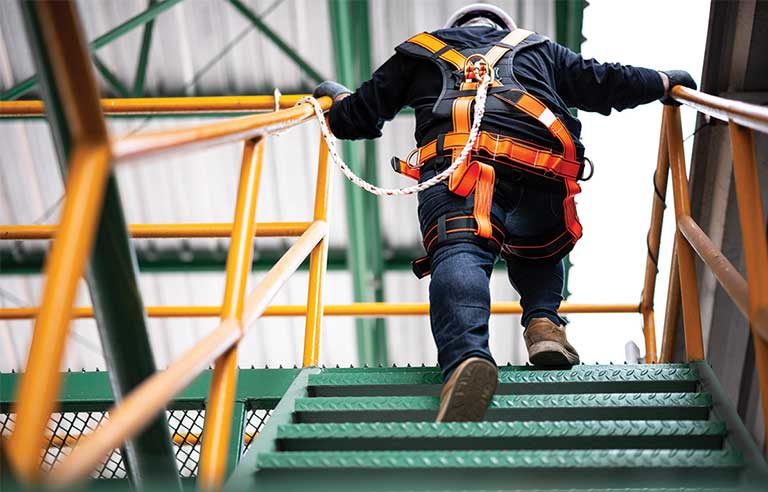10 tips for preventing falls at work

The National Safety Stand-Down to Prevent Falls in Construction is an annual event. But employers should focus on fall prevention all year.
“Jobsites change and crews come and go – you may have new workers who missed the stand-down and new projects or phases of work with different fall hazards or considerations,” CPWR – The Center for Construction Research and Training says. The center has 10 tips you can use to support your workplace fall prevention program.
- Have another stand-down. If you already had a fall-related stand-down, plan another and change up the activities or specific topics.
- Focus on rescue. Do you have a plan in place in the event someone falls? Make sure everyone knows what the plan is.
- Create or revise your written fall prevention plan. Put together a task force to develop a project-specific fall protection plan.
- Model how to inspect equipment. Supervisors need to provide adequate time for daily inspections, and they should model how to self-inspect fall protection and other equipment.
- Partner with community events. Help raise awareness about the importance of fall protection by participating in community events.
- Share a testimonial. Invite a previously injured worker or family member to speak in person, or use video clips or written testimonials.
- Include fall protection articles in company communications. Point to a recent construction fall tragedy in the news and urge workers to learn from it.
- Provide fall prevention training. Remind supervisors and lead workers that if they work safely and use fall protection correctly, their co-workers are more likely to do so.
- Encourage workers to speak up. Workers often stay quiet rather than ask questions, even if they don’t know the right way to do something or they’ve identified an issue that may lead to an unsafe situation.
- Make sure your message reaches everyone. Provide training that is culturally and linguistically appropriate for the workforce.
Post a comment to this article
Safety+Health welcomes comments that promote respectful dialogue. Please stay on topic. Comments that contain personal attacks, profanity or abusive language – or those aggressively promoting products or services – will be removed. We reserve the right to determine which comments violate our comment policy. (Anonymous comments are welcome; merely skip the “name” field in the comment box. An email address is required but will not be included with your comment.)

